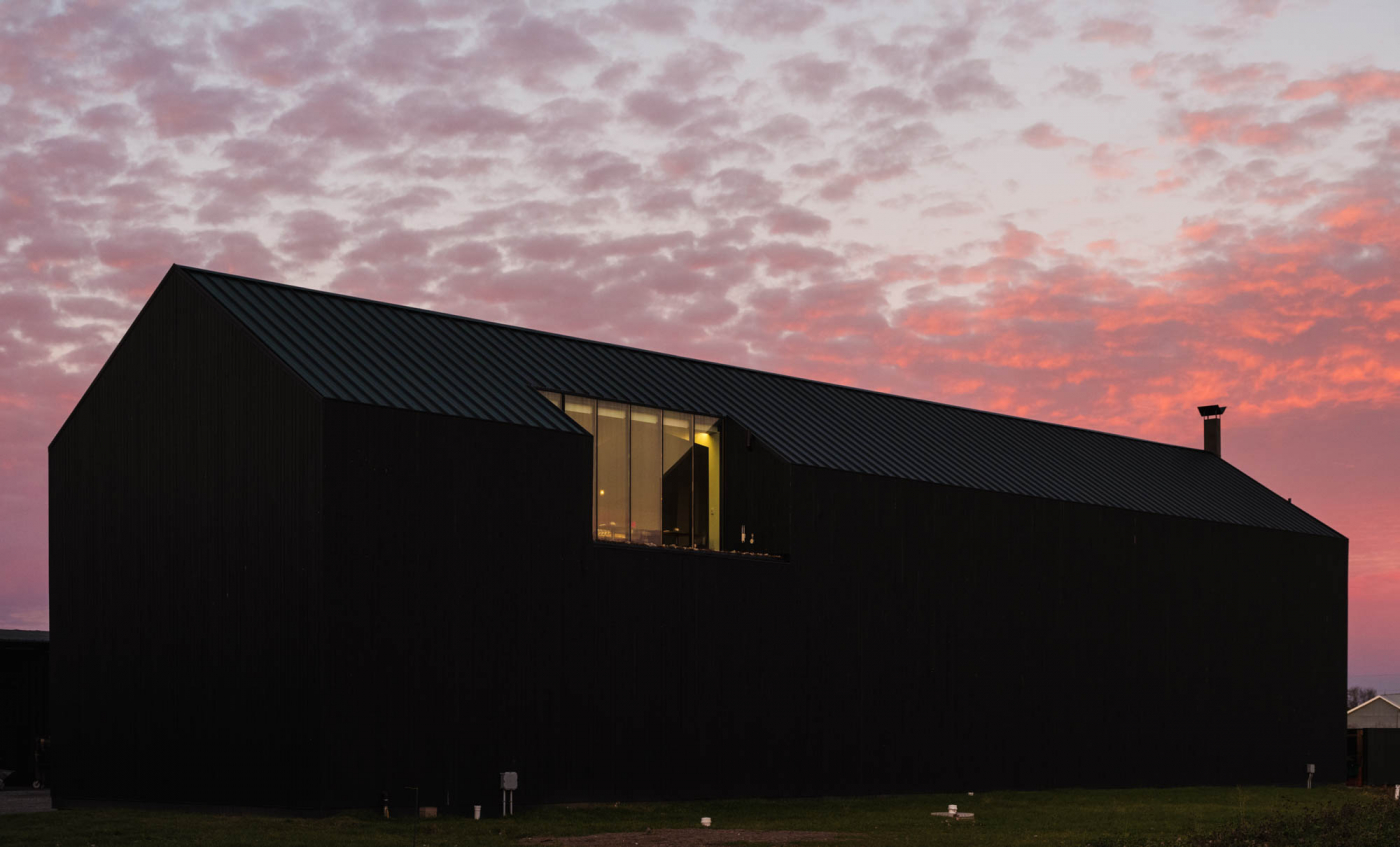
What actually is Canadian food?
What is the essence of the Canadian-ness of the food that chefs Daniel Hadida and Eric Robertson are creating at The Restaurant at Pearl Morissette? David J Constable explores

What is the essence of the Canadian-ness of the food that chefs Daniel Hadida and Eric Robertson are creating at The Restaurant at Pearl Morissette? David J Constable explores

On the way to Niagara Falls, we – a group of international journalists and I – made the stop in Jordan Station to visit the Pearl Morissette winery. We did the whole tour and press-junket thing; sipping, spitting, sipping, spitting, listening to all of the intricacies of low-intervention plonk production; sipping, spitting, then gulping great mouthfuls of Cuvée Blu and Cabernet Franc. Naturally, that pang of hunger strikes, and we were led upstairs to the restaurant for lunch.
A daily menu arrives and makes a point of the kitchen’s Canadian-ness
The ground-floor wine room gave way to a sparsely furnished upper-deck dining space, filled with natural light. In the roof of this two-floor barn, the restaurant Pearl Morissette is a welcome site to glutenous journos who by this point, are an utter embarrassment when it comes to concealing their greed.
Two-seater tables dot the foreground, but one’s attention is drawn instantly to the long wooden table running down the centre of the floor like some carpenter’s art installation. From the vantage point of the table, views in front (and behind), via floor-to-ceiling windows, reveal some of the 60-acre property and working farmland of this small pocketed winery on the eastern side of Lincoln Town.

The kitchen at The Restaurant at Pearl Morissette, by John Cullen
A daily menu arrives and makes a point of the kitchen’s Canadian-ness – what the Dickens is that I hear you cry? Indeed, what exactly is Canadian food or food from Canada? For all of the well-advertised gloopy piles of poutine and sickly-sweet beavertails the country promotes, this list of ingredients appears well wide of that mark; promoting, instead, a seasonal tasting menu of plundered vegetables that demonstrate a serious commitment to their own fields.

The Restaurant at Pearl Morissette, by John Cullen
To begin, we get a few mouthfuls of yellowfin tuna consommé with halved tiny red and yellow tomatoes, accompanied by a sourdough bread with spelt and emmer wheat that’s as warm and springy as a Kardashian’s tush! And I’ll not quickly forget the smoothest of cow’s milk butter, cultured and separated to 84% butterfat, then whipped with fermented buttermilk.
A non-alcoholic pairing is available – including apple juice with sage and rhubarb, and matcha-honey-mushroom kombucha – but it was never going to be anything other than wine that followed for us: more skin-fermented Cuvée Blu ensures that everyone remains well-lubricated, anxious for what comes next.
As more plates arrive – all neat and tidy assemblies of regionally acquired veg alongside farmyard fowl – the excitement increases. There’s a hakurei turnip with preserved tuna and the most unusual heirloom pepper, the sweet Doe Hill; earthy and robust wild mushrooms with guinea hen leg; then more guinea body parts – presumably from the same bird – with guinea hen breast and sweet corn on hay. The breast is gently smoked then slow-roasted over peach wood while basted in chicken fat. This isn’t what I or any of us expected, not in Canada, not out here in the boondocks of rural Ontario. This is considered stuff, organic, cultivated, zip-code elements, prepared and plated with the lightest of touches.
We drink a bottle of something crisp from nearby Butler’s Grant vineyard, moments away from the Pearl Morissette winery, and because journalists lack restraint and have no idea what the words “no, thank you” means, this is followed by one of the estate’s own: a deep-cherry Pinot Noir that’s lush and tender and an absolute winner, despite being countless bottles in.
Then, a cusk potato with anise is followed by a brilliant eel dish with honey brioche and shiso leaf. The eels are harvested by the Qalipu Mi’Kmaq people in Newfoundland, arriving at the kitchen alive where they are killed by ikejime then washed in ice and salt, brined whole for 24 hours before filleted, then glazed with a honey, olive, plum vinegar, fermented chilli brine and salted fish garum mix, before charring the skin, peeling, and re-grilling.

The Restaurant at Pearl Morissette, by John Cullen
This is all a familiar story. A couple of eager young chefs who quickly outgrew their surroundings and fled their Ontario homes for the kitchens of the world, returning having adopted news styles, techniques and international inspiration, ready to make you look at familiar ingredients anew. Daniel Hadida worked in Paris at one Michelin-starred Le Châteaubriand and Septime, while Eric Robertson worked in Belgium at one-starred In de Wulf. Together they understand all of the bizarreness – and necessity – of foraging, fermenting, pickling, salting and dehydrating produce; manipulating a single ingredient to get the most from it.
Dessert is a sharp but refreshing verbena sorbet with angelica (a type of wild celery) and lemongrass, followed by a black koji tart with a fabulous crust alongside hazelnut and sweetgrass aromatic herbs. As we leave, steaming black Costa Rican coffee is prepared alongside a fluffy choux au craquelin filled with a light raspberry and rose-hip filling. It’s a neat finish to a surprising lunch that crept up on us all, and is as close as I get to finding out what Canadian food is, and just how good food from Canada can be. C
Pearl Morissette, 3953 Jordan Rd, Jordan Station, ON L0R 1S0, Canada
+1 905-562-4376; pearlmorissette.com